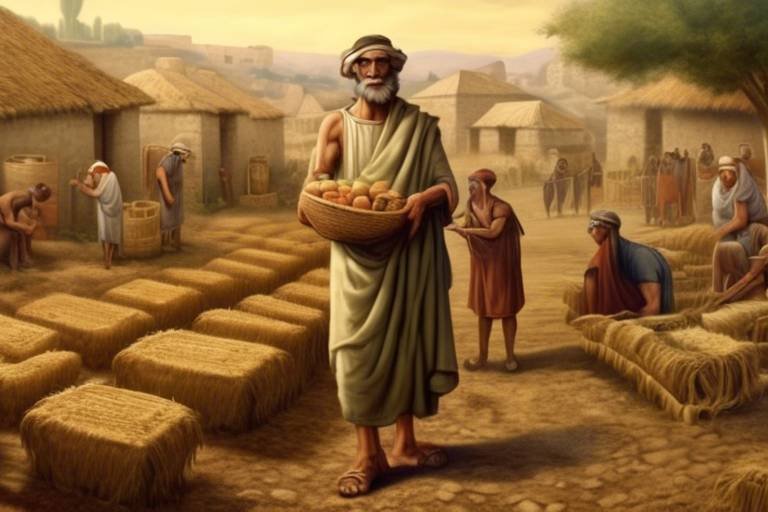The Mystery of the Ancient Egyptians' Spiritual Symbols
The ancient Egyptians' spiritual symbols hold a mysterious allure, captivating generations with their hidden meanings and profound significance. These symbols, deeply ingrained in Egyptian culture and belief systems, offer a glimpse into the spiritual practices and daily life of this ancient civilization.
From the enigmatic Ankh symbol representing life and immortality to the protective Eye of Horus, each symbol tells a story of ancient wisdom and divine connection. The Scarab Beetle, symbolizing rebirth and transformation, and the Djed Pillar, embodying stability and endurance, offer insights into the Egyptians' views on life, death, and the afterlife.
The Lotus Flower, symbol of creation and rebirth, and the Shen Ring, representing eternal protection and unity, showcase the intricate symbolism woven into Egyptian art and religious practices. The Was Scepter, a symbol of authority and power, and the Scarab Amulet, believed to bring luck and protection, highlight the diverse meanings and uses of these spiritual symbols.
As we unravel the mysteries of these ancient Egyptian symbols, we embark on a journey through time, exploring the rich tapestry of beliefs and traditions that shaped one of the world's most fascinating civilizations.

The Ankh: Symbol of Life and Immortality
Exploring the significance and hidden meanings behind the spiritual symbols used by the ancient Egyptians in their religious practices and daily life.
The Ankh, often referred to as the key of life or the key of the Nile, is a prominent symbol in ancient Egyptian culture symbolizing life and immortality. Shaped like a cross with a loop at the top, the Ankh represents the eternal life given by the gods to the pharaohs and the people of Egypt. It is a powerful emblem that embodies the concept of life beyond the physical realm, connecting the earthly life with the afterlife.
The Ankh is believed to hold the key to unlocking the mysteries of existence and the secrets of eternal life. It is a symbol of divine protection, ensuring the continuity of life beyond death. In Egyptian art and hieroglyphics, the Ankh is often depicted being held by the gods, indicating their ability to grant immortality to the deceased. The loop at the top of the Ankh is thought to symbolize the eternal soul, while the cross represents the material world.
Throughout Egyptian history, the Ankh was used in various religious ceremonies and rituals, emphasizing the importance of life and the afterlife in Egyptian belief systems. It was commonly carried by deities in ancient Egyptian art, symbolizing their role as givers of life and protectors of the deceased. The Ankh's presence in tombs and temples signified the eternal cycle of life, death, and rebirth, reflecting the Egyptians' deep spiritual connection to the concept of immortality.
The Ankh's enduring significance in Egyptian culture highlights the profound belief in the continuity of life beyond the physical realm. It serves as a reminder of the eternal nature of existence and the spiritual journey towards immortality. The Ankh stands as a timeless symbol of the enduring legacy of the ancient Egyptians and their profound understanding of life, death, and the afterlife.
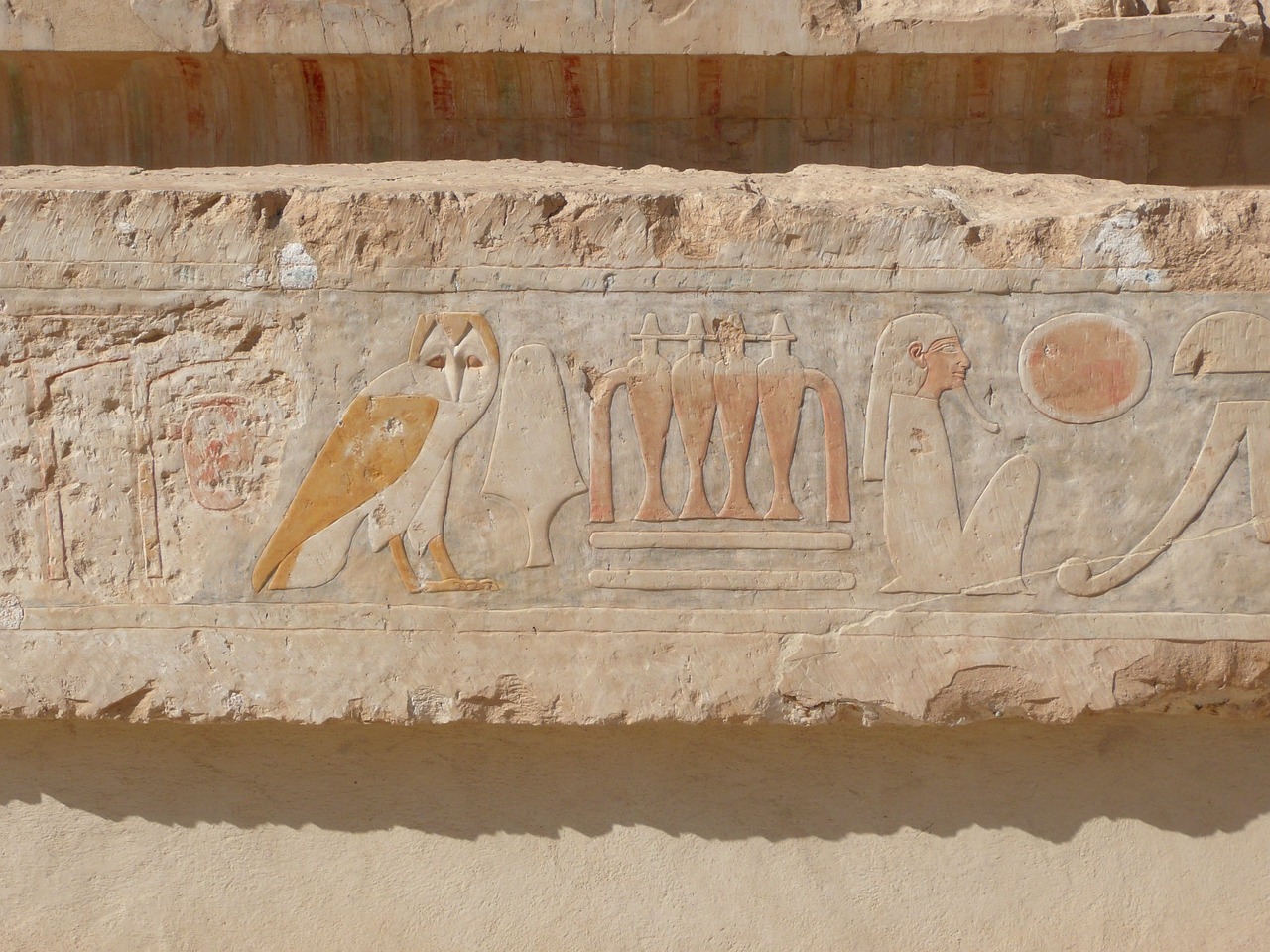
The Eye of Horus: Protection and Healing
The Eye of Horus, also known as the Wedjat or Udjat, is a powerful symbol in ancient Egyptian culture, representing protection and healing. This symbol is deeply rooted in the mythology surrounding the god Horus, the falcon-headed deity associated with the sky and kingship. The Eye of Horus is believed to have protective qualities, warding off evil forces and bringing healing to those in need.
Depicted as the eye of a falcon, the Eye of Horus is often associated with the concept of *royal power and divine protection*. It is said to provide a sense of security and watchful guidance, much like a watchful guardian overseeing its domain. The eye is a reminder of the ever-watchful presence of the gods, offering comfort and assurance to the ancient Egyptians in their daily lives.
Moreover, the Eye of Horus is also linked to the idea of *wholeness and completeness*. Legend has it that Horus lost his eye during a battle with his uncle Set, the god of chaos. However, the eye was magically restored, symbolizing healing and restoration. This story underscores the Eye of Horus's association with *renewal and protection against harm*.
Furthermore, the Eye of Horus is believed to possess *magical properties*, capable of warding off illness and misfortune. It was often used in amulets and jewelry worn by both the living and the deceased to ensure protection and well-being. The symbol's intricate design, with its distinctive markings representing fractions, adds to its mystique and allure, emphasizing its connection to *mathematics, medicine, and the divine*.
In Egyptian art and hieroglyphics, the Eye of Horus is frequently depicted alongside other symbols, such as the Ankh and the Scarab Beetle, reinforcing its significance in the ancient Egyptian belief system. Its presence in tombs, temples, and artifacts highlights its enduring importance in both religious rituals and everyday life, serving as a *symbol of strength, healing, and divine intervention*.

The Scarab Beetle: Symbol of Rebirth and Transformation
The Scarab Beetle holds a prominent place in ancient Egyptian mythology, serving as a powerful symbol of rebirth and transformation. Revered for its connection to the cycle of life, death, and rebirth, the Scarab Beetle was believed to embody the sun god, Khepri, who rolled the sun across the sky each day, symbolizing renewal and regeneration.
Representing the idea of transformation and the eternal nature of the soul, the Scarab Beetle was often depicted in amulets and jewelry, worn by both the living and the deceased. Its significance extended beyond mere adornment, as it was thought to provide protection and good fortune to the wearer, guiding them through the journey of life and beyond.
In Egyptian funerary practices, the Scarab Beetle played a crucial role in the journey to the afterlife. Placed on the heart of the deceased during mummification, it was believed to ensure the individual's heart would speak truthfully during the weighing of the heart ceremony, where one's actions in life were judged for entry into the afterlife.
The Scarab Beetle symbolizes not only the physical act of rebirth, such as the emergence of the beetle from its dung ball, but also the spiritual transformation and renewal of the soul. Its association with the sun and the daily cycle of dawn and dusk further reinforces its role as a symbol of regeneration and the eternal cycle of life.
Through the imagery of the Scarab Beetle, the ancient Egyptians conveyed the profound belief in the continuity of life, the enduring nature of the soul, and the perpetual cycle of creation and rebirth. This symbol serves as a reminder of the transformative power within each individual, encouraging personal growth, spiritual evolution, and the embrace of change as a natural part of existence.
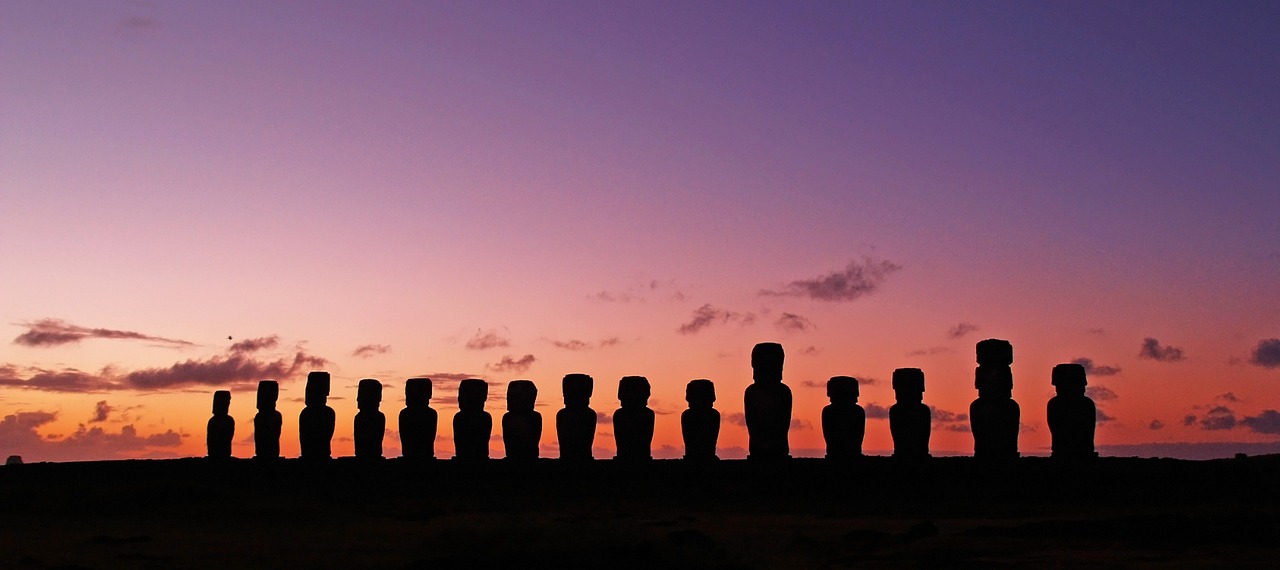
The Djed Pillar: Stability and Endurance
The Djed Pillar holds a profound significance in ancient Egyptian culture, symbolizing stability and endurance in the face of challenges and the passage of time. This symbol, often associated with the god Osiris, represents the backbone of the god and is linked to resurrection and the afterlife. The Djed Pillar is depicted as a column with crossbars near the top, resembling the shape of a backbone or a tree trunk, emphasizing strength and support.
Ancient Egyptians believed that the Djed Pillar was a symbol of the eternal stability of the universe and the enduring nature of life beyond death. It played a crucial role in rituals related to resurrection, symbolizing the strength needed to overcome obstacles and achieve spiritual transformation. The Djed Pillar was also connected to the concept of Ma'at, representing cosmic order and balance in the world.
Depictions of the Djed Pillar can be found in various ancient Egyptian artifacts, including amulets, temple walls, and tomb paintings. Its presence in funerary contexts underscores its role in ensuring the deceased's journey to the afterlife and their eternal well-being. The symbolism of the Djed Pillar transcends physical stability, embodying the endurance of the human spirit and the cyclical nature of life and death.
Furthermore, the Djed Pillar is often associated with the annual festival of Osiris, where the god's resurrection was celebrated, reinforcing the pillar's connection to themes of renewal and regeneration. Its representation in art and religious ceremonies reflects the ancient Egyptians' belief in the continuity of life beyond the earthly realm and the enduring power of the divine forces that govern the universe.
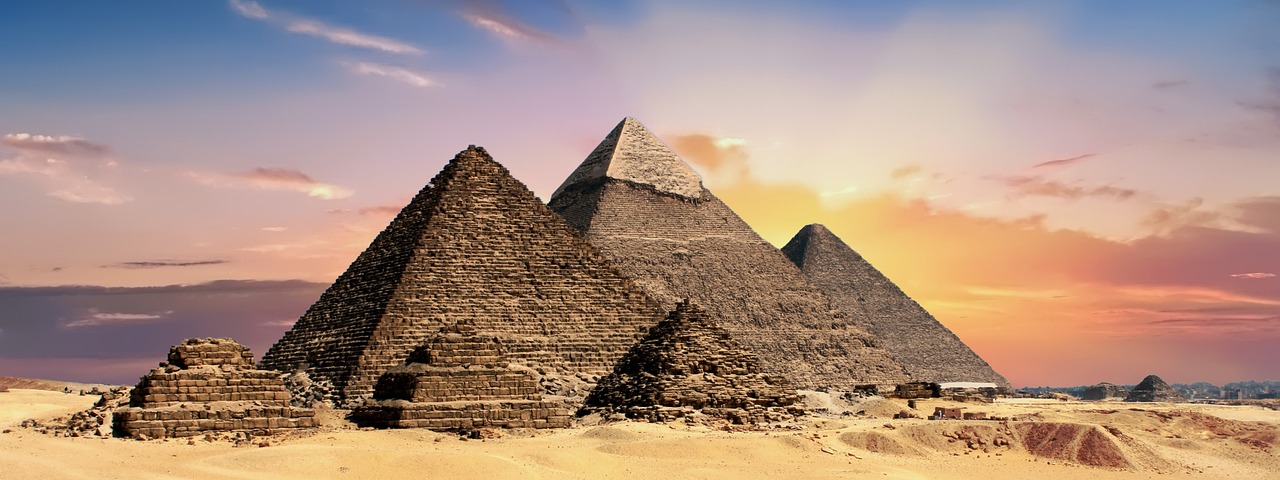
The Lotus Flower: Symbol of Creation and Rebirth
Exploring the significance and hidden meanings behind the spiritual symbols used by the ancient Egyptians in their religious practices and daily life.
The Lotus Flower holds a profound significance in ancient Egyptian art and religion, symbolizing creation, rebirth, and the cycle of life. In Egyptian mythology, the lotus flower emerged from the chaotic waters of Nun at the beginning of time, representing the process of creation and the emergence of life from the primordial waters.
Depicted in various forms of art and architecture, the Lotus Flower is often associated with the sun god Ra, symbolizing his daily journey across the sky and his role in the creation of the world. The flower's ability to bloom in murky waters and rise above the surface mirrors the concept of rebirth and spiritual enlightenment.
Furthermore, the Lotus Flower is linked to the concept of resurrection and the afterlife in Egyptian belief systems. Just as the flower closes its petals at night and reopens in the morning, it symbolizes the cycle of death and rebirth, highlighting the eternal nature of existence.
Ancient Egyptians believed that the Lotus Flower held magical properties and was a symbol of purity, fertility, and divine grace. Its presence in religious ceremonies and funerary rituals underscored its role in guiding the departed souls through the journey to the afterlife, ensuring a peaceful transition and eventual rebirth.

The Shen Ring: Eternal Protection and Unity
The Shen Ring, a symbol of eternal protection and unity in ancient Egyptian culture, holds profound significance in the realm of spirituality and symbolism. Representing a looped rope with a knot at its base, the Shen Ring embodies the concept of eternity, continuity, and cyclical nature of time. It symbolizes the eternal protection provided by the gods and the unity of the universe in a harmonious balance.
In Egyptian art, the Shen Ring is often depicted encircling royal cartouches, symbolizing the eternal protection and divine authority bestowed upon pharaohs. The looped shape of the Shen Ring signifies the cyclical nature of life, death, and rebirth, reflecting the ancient Egyptians' belief in the continuity of existence beyond physical boundaries.
Moreover, the Shen Ring is associated with the concept of infinity and completeness, emphasizing the interconnectedness of all aspects of life and the eternal nature of the soul. It serves as a reminder of the unbroken bond between the mortal world and the divine realm, offering reassurance of eternal protection and unity with the cosmic forces.
Furthermore, the Shen Ring is often depicted in conjunction with other symbols such as the Ankh and the Djed Pillar, reinforcing its role in rituals related to resurrection, regeneration, and spiritual transformation. Its presence in funerary contexts highlights its significance in guiding the deceased through the journey to the afterlife, ensuring eternal protection and unity with the divine.
In essence, the Shen Ring symbolizes the eternal cycle of life, death, and rebirth, offering a sense of security, continuity, and unity in the face of the unknown. Its enduring presence in ancient Egyptian art and religious practices underscores its timeless significance as a symbol of eternal protection and unity.
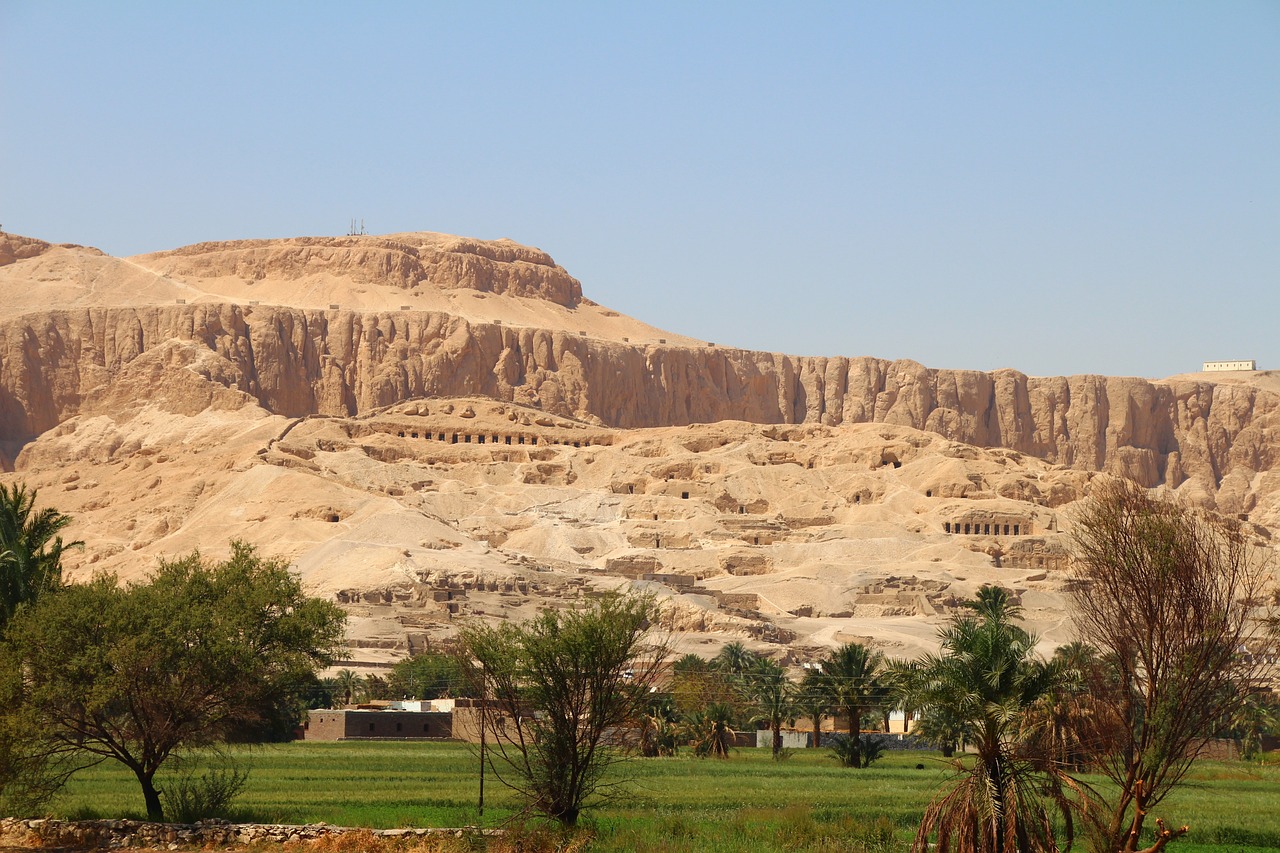
The Was Scepter: Authority and Power
Exploring the significance and hidden meanings behind the spiritual symbols used by the ancient Egyptians in their religious practices and daily life.
The Was Scepter, a symbol deeply rooted in ancient Egyptian culture, holds immense significance in representing authority and power. Carried by gods and pharaohs alike, the Was Scepter symbolizes the ruler's dominion and control over the kingdom. Shaped like a staff with a forked end, it embodies the power to maintain order and uphold justice.
When adorned with the Ankh symbol at the top, the Was Scepter not only signifies authority but also the ability to grant life and immortality. It serves as a visual representation of the pharaoh's divine right to rule and his connection to the gods. The Was Scepter was often depicted in royal regalia, emphasizing the pharaoh's role as the earthly embodiment of divine power.
Furthermore, the Was Scepter was believed to possess magical properties, capable of warding off evil forces and ensuring the protection of the kingdom. It was a symbol of strength and stability, instilling confidence in the ruler and his subjects during times of uncertainty and turmoil.
In Egyptian mythology, the Was Scepter was associated with the goddess Isis, known for her magical prowess and protective nature. The scepter was an emblem of her authority and influence, reflecting her role as a powerful deity revered for her wisdom and compassion.
Overall, the Was Scepter stands as a timeless symbol of authority and power in ancient Egyptian culture, representing the divine right to rule and the strength to maintain order in the kingdom. Its presence in religious ceremonies and royal iconography underscores its significance as a potent emblem of leadership and sovereignty.
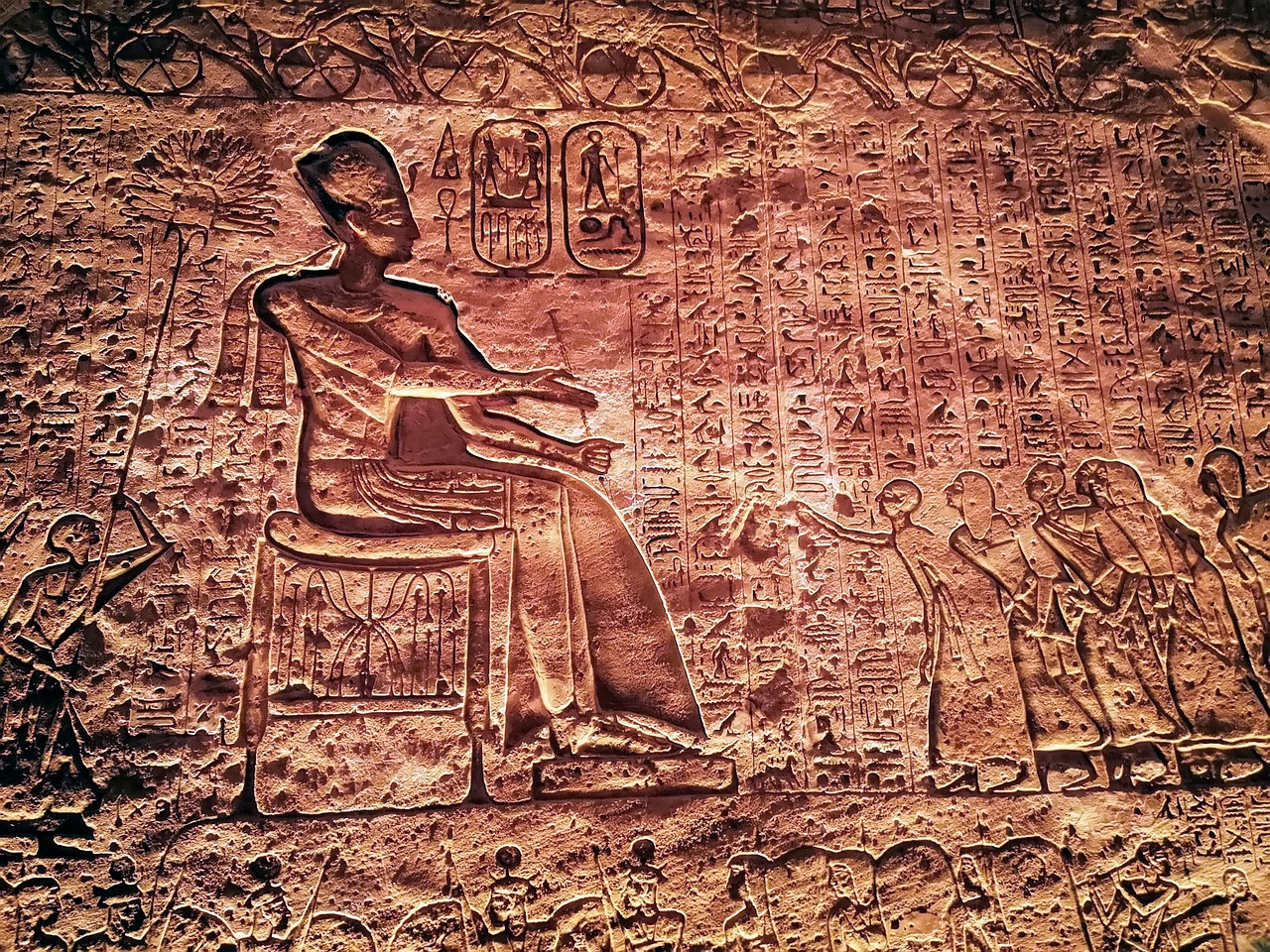
The Scarab Amulet: Luck and Protection
The Scarab Amulet holds a special place in ancient Egyptian culture, revered for its association with luck and protection. This symbolic artifact, often crafted in the image of a scarab beetle, was believed to bring good fortune to the wearer and shield them from harm. The scarab beetle itself was seen as a symbol of regeneration and transformation, embodying the cycle of life and death in Egyptian mythology.
Ancient Egyptians would often wear scarab amulets as talismans, believing in their mystical powers to ward off evil spirits and negative energies. These intricately designed pieces were not only decorative but also carried deep spiritual significance, serving as a constant reminder of the protective forces at play in the universe.
It was believed that the scarab beetle, known for rolling balls of dung along the ground, represented the sun's daily journey across the sky and its role in the cycle of life. The scarab amulet, therefore, symbolized the eternal renewal of life and the enduring power of creation.
Individuals would often be buried with scarab amulets placed over their hearts, serving as a safeguard for their journey into the afterlife. The belief in the amulet's ability to ensure safe passage into the realm of the dead highlights the profound faith ancient Egyptians placed in the protective qualities of these sacred charms.
Moreover, the scarab amulet was not limited to personal adornment but also found its way into various aspects of Egyptian art and religious practices. From intricate jewelry pieces to elaborate tomb decorations, the scarab motif was a ubiquitous symbol of luck, protection, and spiritual guidance in ancient Egyptian society.
Frequently Asked Questions
- What do the ancient Egyptian spiritual symbols represent?
The ancient Egyptian spiritual symbols represent various aspects of life, belief systems, and the afterlife. Each symbol holds deep significance and is often associated with gods, rituals, and cultural practices.
- Why were these symbols important in ancient Egyptian culture?
These symbols were important in ancient Egyptian culture as they played a vital role in religious ceremonies, art, and everyday life. They were believed to hold power, protection, and meaning that influenced the spiritual beliefs and practices of the people.
- How were these symbols used in rituals and ceremonies?
The symbols were used in rituals and ceremonies as tools to invoke specific meanings, blessings, or protections. They were often incorporated into religious artifacts, amulets, and temple decorations to honor the gods and ensure the well-being of the individuals or communities.
- What is the significance of the Ankh symbol in ancient Egyptian beliefs?
The Ankh symbolizes life and immortality in ancient Egyptian beliefs. It is closely associated with deities and the concept of eternal life, serving as a powerful emblem of vitality and spiritual connection.
- How did the ancient Egyptians view the concept of rebirth and transformation through symbols like the Scarab Beetle?
The ancient Egyptians viewed rebirth and transformation as essential aspects of their spiritual beliefs, symbolized by the Scarab Beetle. This symbol represented the cycle of life, death, and regeneration, emphasizing the eternal nature of existence.


